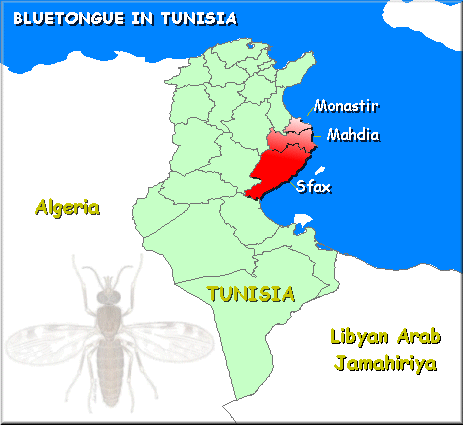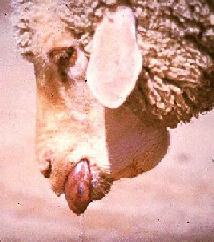In July-August 1999, bluetongue was reported in Bulgaria where serotype 9 was isolated by the OIE Reference Laboratory, Institute of Animal Health, Pirbright (see EMPRES Bulletin No. 11).
More recently, in December 1999, an outbreak of bluetongue was reported in Tunisia for the first time after detection of antibodies and the observation of clinical signs in sheep. The outbreaks were located in seven districts (Ouardanine, Jemmel, Bembla, Zeramdine, El Djem, Sousse and Sfax south) in the governorates of Monastir, Mahdia and Sfax (see map) and involved 8 924 small ruminants. A total of 829 cases were seen, of which 325 animals died.

A thorough epidemiological investigation will be necessary to determine the full extent of the outbreak, its origin and the distribution of the vector responsible for the transmission of the disease. Furthermore, the serotype responsible for the disease must be identified before considering the implementation of any vaccination campaign. So far, the following control measures have been taken.
In the outbreaks:
Around the outbreaks:
BLUETONGUE
|
 |